|
There are many mysteries in the world of dogs. From the entire species beginnings to the development of each breed. The origins of few dogs are known with exact certainty. Others can be pieced together by ancient writings or archaeological finds. And some are wrapped in the mists of legends. One of the more fascinating locations for dog history lies in the Mediterranean. Two of the oldest groupings developed there. However, no one knows where their ancestors came from. These dogs are the small bichons and the primitive Mediterranean sighthounds. Neither is related, but both trace their roots throughout the islands in the region. I have been updating the site and after researching both groups I thought I would compile my findings here. None of this information can be stated as fact, but it is the closest I have been able to come to a logical answer. Due to length I have split them into two posts, with today’s covering the bichons. The sighthounds will be covered next week. The bichon family includes seven modern breeds of dogs that are recognized, the Bichon Frisé, Bolognese, Coton de Tuléar, Havanese, Löwchen, Maltese, and Russian Tsvetnaya Bolonka. There is disagreement in some additions to this grouping, mainly the Löwchen and the Russian Tsvetnaya Bolonka. Some experts believe the Löwchen is not part of the bichon family and many others (including most kennel clubs) do not yet recognize the Russian Tsvetnaya Bolonka as a breed. Since several of these breeds are not well known, let’s introduce each of them before further diving into their history as a whole.
As we begin this winding journey, it is important to remember that until a few hundred years ago none of the bichons were a breed as we know today. Historically few dogs have been isolated enough to breed true without direct human intervention. Geographically, the Mediterranean has been a trade route for thousands of years. Ancient civilizations have risen and fallen in this region. While in later centuries European explorers would traverse the islands. Therefore, it is probable most, if not all, of the bichons interbred throughout their early beginnings. References to bichons can be traced back to at least 500 BC. ‘Bichon’ is first mentioned in Aristotle’s writings around 350 BC. (Which in itself is a mystery, as the word is credited as being French, but only dates to the 1500s.) The Maltese is considered the oldest, a favorite of the ancient Greeks, Romans, and Egyptians. Legend states even Cleopatra had one of these little dogs.
This would imply the history of the Maltese (and therefore the other bichons) began on the mainland. Over the years there have been several theories regarding their ancestry. However, there are three main theories. The first two seem illogical when examined closer. First, that the Maltese descends from Oriental dogs such as the Tibetan Terrier and Pekinese. Trade from the Mediterranean and China was not yet fully established when early references are made of the bichon/Maltese. Nor do any of these dogs have a flat, brachycephalic face. The second, that their ancestors result from crosses of spaniel and water-type dogs such as the Barbet and Poodle. This is impossible as the breed predates both spaniels and the Barbet which is older than the Poodle. However, water dogs influenced other bichons at a later date. The last theory, and the one that seems the most probable is that the Maltese descends from an ancient European spitz. These dogs would have come from the mainland in what is now present day Germany and Switzerland. A pair of Egyptian statuettes found near Cairo show one dog similar to the bichon-type and a second spitz resembling a modern Pomeranian. As the Pomeranian itself descends from the German Spitz, this find lends more weight to the bichons having split from spitz long ago. Once established these early Maltese spread throughout the Mediterranean. The majority were probably moved by the seafaring Phoenicians. However the Greek and Egyptians would have aided in this migration while the Romans helped spread them throughout Europe. After the Maltese the Bolognese and Bichon Frisé are considered the oldest of the bichons. In many ways their history entwines together, but I will begin with the Bichon Frisé. Most authors credit their ancestor as the extinct Bichon Tenerife, from the Canary Island of the same name. For a while the Bichon Frisé was known as the Tenerife. The Spanish brought small white dogs back to Europe from the Canary Islands in the 1500s. However, there were already similar dogs on the mainland. This circles us back to the Bolognese, named for the city of Bologna. Present in Italy since at least the 1200s and a staple across Europe. Beloved by the nobility and upper classes they were given as gifts from one country to another. Therefore, it is logical that the Bolognese and Bichon Frisé interbred throughout the centuries. Both probably crossed with curly coated breeds such as Poodles, Barbets, or Lagotto Romagnolo. Any small dogs returning to Europe from the Mediterranean could have returned to the gene pool. In time the Bichon Frisé/Bolognese would give rise to the Löwchen. The Little Lion Dog’s history is lost as it appeared in all the major countries by the 1500s. Even the origin of their haircut is unknown, some suggest it was because of their use as bed warmers. Other state the reason is obvious, to make the dogs appear more lionlike. During this period Europeans were still sailing around the Mediterranean. Aside from the Bichon Tenerife there was a second bichon on the island of Reunion that is also extinct. Reunion is near Madagascar, far from the Canary Islands. However many authors state the Bichon Reunion is descended from the Bichon Tenerife. Small white dogs were almost certainly brought to Reunion by the French and Spanish. But they may have been from the mainland, Tenerife, or more likely, both. The Bichon Reunion made its way to Madagascar and crossed with local breeds to create the Coton de Tuléar. Although their development would not have been that simple. Again, multiple strains would have been used and likely all small white dogs interbred. A similar occurrence happened in Cuba with the Havanese. Its ancestor is the extinct Blanquito de la Habana, another bichon whose own origins are debated. Some say they are dogs brought by the Spanish (Bichon Tenerife) and other the Italians (Bolognese or Maltese). Since many Europeans came to Cuba from the Canary Islands the Bichon Tenerife is more likely. The Blanquito de la Habana remained popular until it was crossed with Poodles in the 1800s, transforming them into modern Havanese. This leaves us with the Russian Tsvetnaya Bolonka. While early Bichon Frisé and Bolognese were being established throughout Europe, they were also present in Russia. After the Russian Revolution they mixed with other small dogs such as the Lhasa Apso and Shih Tzu to create the Russian Tsvetnaya Bolonka. At one point two varieties of Bolonka existed, but the Fédération Cynologique Internationale deemed the white too similar to the Bolognese to be recognized. The bichon family has spread across the world, from one continent to the other. They have (and have been) influenced by countless other breeds. These dogs began as companions and continue to fulfill that purpose hundreds of years later. See something you don’t agree with? Or have additional information? Please leave me a comment below.
0 Comments
Leave a Reply. |
AuthorLisa Quibell Archives
March 2019
Categories
All
|
- Home
- Worldly Dogs Blog
-
Breeds Geographically
- Africa >
-
Asia
>
- Australia >
-
Europe
>
- Austria >
- Belgium >
- Bosnia and Herzegovina >
- Croatia >
- Czech Republic >
- Denmark >
-
England
>
- Airedale Terrier
- Basset Hound
- Beagle
- Bedlington Terrier
- Border Collie
- Border Terrier
- Bull Terrier
- Bulldog
- Bullmastiff
- Cavalier King Charles Spaniel
- Clumber Spaniel
- Curly Coated Retriever
- English Cocker Spaniel
- English Foxhound
- English Setter
- English Springer Spaniel
- English Toy Spaniel
- Field Spaniel
- Flat Coated Retriever
- Greyhound
- Harrier
- Jack Russell Terrier
- Lakeland Terrier
- Lancashire Heeler
- Manchester Terrier
- Mastiff
- Miniature Bull Terrier
- Norfolk Terrier
- Norwich Terrier
- Old English Sheepdog
- Otterhound
- Parson Russell Terrier
- Patterdale Terrier
- Pointer
- Smooth Fox Terrier
- Sporting Lucas Terrier
- Staffordshire Bull Terrier
- Sussex Spaniel
- Whippet
- Wire Fox Terrier
- Yorkshire Terrier
- Finland >
-
France
>
- Anglo-Français de Petite Vénerie
- Ariégeois
- Barbet
- Basset Artésien Normand
- Basset Bleu de Gascogne
- Basset Fauve de Bretagne
- Beagle Harrier
- Beauceron
- Berger Picard
- Bichon Frisé
- Billy
- Blue Picardy Spaniel
- Braque d'Auvergne
- Braque de l'Ariége
- Braque Du Bourbonnais
- Braque Français
- Braque Saint-Germain
- Briard
- Briquet Griffon Vendéen
- Brittany
- Chien d'Artois
- Chien Français Blanc et Noir
- Chien Français Blanc et Orange
- Chien Français Tricolore
- Dogue de Bordeaux
- French Bulldog
- French Spaniel
- Grand Anglo-Français Blanc et Noir
- Grand Anglo-Français Blanc et Orange
- Grand Anglo-Français Tricolore
- Grand Basset Griffon Vendéen
- Grand Bleu de Gascogne
- Grand Gascon-Saintongeois
- Grand Griffon Vendéen
- Great Pyrenees
- Griffon Bleu de Gascogne
- Griffon Fauve de Bretagne
- Griffon Nivernais
- Löwchen
- Petit Basset Griffon Vendéen
- Petit Bleu de Gascogne
- Petit Gascon-Saintongeois
- Picardy Spaniel
- Poitevin
- Pont-Audemer Spaniel
- Porcelaine
- Pyrenean Shepherd
- Wirehaired Pointing Griffon
-
Germany
>
- Affenpinscher
- Bavarian Mountain Hound
- Biewer Terrier
- Boxer
- Dachshund
- Deutsche Bracke
- Deutscher Wachtelhund
- Doberman Pinscher
- Eurasier
- German Longhaired Pointer
- German Pinscher
- German Rough Haired Pointer
- German Shepherd Dog
- German Shorthaired Pointer
- German Spitz
- German Wirehaired Pointer
- Giant Schnauzer
- Great Dane
- Hanoverian Hound
- Hovawart
- Jagdterrier
- Kromfohrländer
- Large Münsterländer
- Leonberger
- Miniature Pinscher
- Miniature Schnauzer
- Pomeranian
- Poodle
- Pudelpointer
- Rottweiler
- Schnauzer
- Small Münsterländer
- Weimaraner
- Westphalian Dachsbracke
- White Shepherd Dog
- Greece >
- Hungary >
- Ireland >
- Italy >
- Malta >
- Netherlands >
- Norway >
- Poland >
- Portugal >
- Romania >
- Russia >
- Scotland >
- Serbia >
- Slovakia >
- Spain >
- Sweden >
- Switzerland >
- Turkey >
- Wales >
- Other European Breeds >
-
North America
>
- Canada >
- Mexico >
-
United States
>
- Alaskan Klee Kai
- Alaskan Malamute
- American Bulldog
- American Bully
- American Cocker Spaniel
- American Eskimo Dog
- American Foxhound
- American Hairless Terrier
- American Leopard Hound
- American Pit Bull Terrier
- American Staffordshire Terrier
- American Water Spaniel
- Australian Shepherd
- Black and Tan Coonhound
- Black Mouth Cur
- Bluetick Coonhound
- Boston Terrier
- Boykin Spaniel
- Carolina Dog
- Catahoula Leopard Dog
- Chesapeake Bay Retriever
- Chinook
- English Coonhound
- English Shepherd
- Miniature American Shepherd
- Mountain Cur
- Olde English Bulldogge
- Plott Hound
- Rat Terrier
- Redbone Coonhound
- Silken Windhound
- Stephens' Cur
- Teddy Roosevelt Terrier
- Toy Fox Terrier
- Treeing Cur
- Treeing Feist
- Treeing Tennessee Brindle
- Treeing Walker Coonhound
- Other North American Breeds >
- South America >
- Alphabetical List
- Breeds By Type
-
Extinct
- African Sand Dog
- Bichon Tenerife
- Basset d'Artois
- Basset Normand
- Basset Saintongeois
- Black and Tan Terrier
- Blanquito de la Habana
- Bouvier des Moerman
- Bouvier des Paret
- Bouvier des Roulers
- Bullenbeisser
- Celtic Hound
- Céris
- Chien Blanc du Roi
- Coton de Reunion
- English Red Decoy Dog
- Grand Fauve de Bretagne
- Griffon d’Ecurie
- Hall's Heeler
- Han Dog
- Happa Dog
- Larye
- Leauvenaar
- Molossus
- Montembeouf
- Normand Hound
- Paisley Terrier
- Saint Hubert Hound
- Saintongeois Hound
- Tahltan Bear Dog
- Tesem
- Timmon's Biter
-
Kennel Clubs
- About Worldly Dogs
Worldly Dogs 2017
- Home
- Worldly Dogs Blog
-
Breeds Geographically
- Africa >
-
Asia
>
- Australia >
-
Europe
>
- Austria >
- Belgium >
- Bosnia and Herzegovina >
- Croatia >
- Czech Republic >
- Denmark >
-
England
>
- Airedale Terrier
- Basset Hound
- Beagle
- Bedlington Terrier
- Border Collie
- Border Terrier
- Bull Terrier
- Bulldog
- Bullmastiff
- Cavalier King Charles Spaniel
- Clumber Spaniel
- Curly Coated Retriever
- English Cocker Spaniel
- English Foxhound
- English Setter
- English Springer Spaniel
- English Toy Spaniel
- Field Spaniel
- Flat Coated Retriever
- Greyhound
- Harrier
- Jack Russell Terrier
- Lakeland Terrier
- Lancashire Heeler
- Manchester Terrier
- Mastiff
- Miniature Bull Terrier
- Norfolk Terrier
- Norwich Terrier
- Old English Sheepdog
- Otterhound
- Parson Russell Terrier
- Patterdale Terrier
- Pointer
- Smooth Fox Terrier
- Sporting Lucas Terrier
- Staffordshire Bull Terrier
- Sussex Spaniel
- Whippet
- Wire Fox Terrier
- Yorkshire Terrier
- Finland >
-
France
>
- Anglo-Français de Petite Vénerie
- Ariégeois
- Barbet
- Basset Artésien Normand
- Basset Bleu de Gascogne
- Basset Fauve de Bretagne
- Beagle Harrier
- Beauceron
- Berger Picard
- Bichon Frisé
- Billy
- Blue Picardy Spaniel
- Braque d'Auvergne
- Braque de l'Ariége
- Braque Du Bourbonnais
- Braque Français
- Braque Saint-Germain
- Briard
- Briquet Griffon Vendéen
- Brittany
- Chien d'Artois
- Chien Français Blanc et Noir
- Chien Français Blanc et Orange
- Chien Français Tricolore
- Dogue de Bordeaux
- French Bulldog
- French Spaniel
- Grand Anglo-Français Blanc et Noir
- Grand Anglo-Français Blanc et Orange
- Grand Anglo-Français Tricolore
- Grand Basset Griffon Vendéen
- Grand Bleu de Gascogne
- Grand Gascon-Saintongeois
- Grand Griffon Vendéen
- Great Pyrenees
- Griffon Bleu de Gascogne
- Griffon Fauve de Bretagne
- Griffon Nivernais
- Löwchen
- Petit Basset Griffon Vendéen
- Petit Bleu de Gascogne
- Petit Gascon-Saintongeois
- Picardy Spaniel
- Poitevin
- Pont-Audemer Spaniel
- Porcelaine
- Pyrenean Shepherd
- Wirehaired Pointing Griffon
-
Germany
>
- Affenpinscher
- Bavarian Mountain Hound
- Biewer Terrier
- Boxer
- Dachshund
- Deutsche Bracke
- Deutscher Wachtelhund
- Doberman Pinscher
- Eurasier
- German Longhaired Pointer
- German Pinscher
- German Rough Haired Pointer
- German Shepherd Dog
- German Shorthaired Pointer
- German Spitz
- German Wirehaired Pointer
- Giant Schnauzer
- Great Dane
- Hanoverian Hound
- Hovawart
- Jagdterrier
- Kromfohrländer
- Large Münsterländer
- Leonberger
- Miniature Pinscher
- Miniature Schnauzer
- Pomeranian
- Poodle
- Pudelpointer
- Rottweiler
- Schnauzer
- Small Münsterländer
- Weimaraner
- Westphalian Dachsbracke
- White Shepherd Dog
- Greece >
- Hungary >
- Ireland >
- Italy >
- Malta >
- Netherlands >
- Norway >
- Poland >
- Portugal >
- Romania >
- Russia >
- Scotland >
- Serbia >
- Slovakia >
- Spain >
- Sweden >
- Switzerland >
- Turkey >
- Wales >
- Other European Breeds >
-
North America
>
- Canada >
- Mexico >
-
United States
>
- Alaskan Klee Kai
- Alaskan Malamute
- American Bulldog
- American Bully
- American Cocker Spaniel
- American Eskimo Dog
- American Foxhound
- American Hairless Terrier
- American Leopard Hound
- American Pit Bull Terrier
- American Staffordshire Terrier
- American Water Spaniel
- Australian Shepherd
- Black and Tan Coonhound
- Black Mouth Cur
- Bluetick Coonhound
- Boston Terrier
- Boykin Spaniel
- Carolina Dog
- Catahoula Leopard Dog
- Chesapeake Bay Retriever
- Chinook
- English Coonhound
- English Shepherd
- Miniature American Shepherd
- Mountain Cur
- Olde English Bulldogge
- Plott Hound
- Rat Terrier
- Redbone Coonhound
- Silken Windhound
- Stephens' Cur
- Teddy Roosevelt Terrier
- Toy Fox Terrier
- Treeing Cur
- Treeing Feist
- Treeing Tennessee Brindle
- Treeing Walker Coonhound
- Other North American Breeds >
- South America >
- Alphabetical List
- Breeds By Type
-
Extinct
- African Sand Dog
- Bichon Tenerife
- Basset d'Artois
- Basset Normand
- Basset Saintongeois
- Black and Tan Terrier
- Blanquito de la Habana
- Bouvier des Moerman
- Bouvier des Paret
- Bouvier des Roulers
- Bullenbeisser
- Celtic Hound
- Céris
- Chien Blanc du Roi
- Coton de Reunion
- English Red Decoy Dog
- Grand Fauve de Bretagne
- Griffon d’Ecurie
- Hall's Heeler
- Han Dog
- Happa Dog
- Larye
- Leauvenaar
- Molossus
- Montembeouf
- Normand Hound
- Paisley Terrier
- Saint Hubert Hound
- Saintongeois Hound
- Tahltan Bear Dog
- Tesem
- Timmon's Biter
-
Kennel Clubs
- About Worldly Dogs

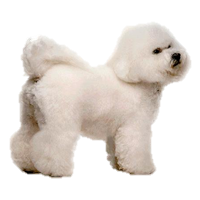
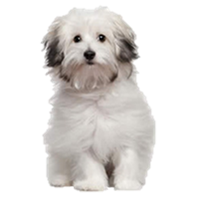

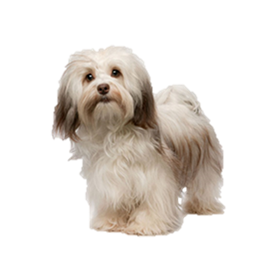
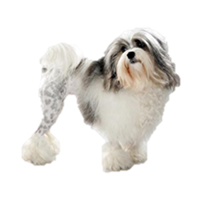

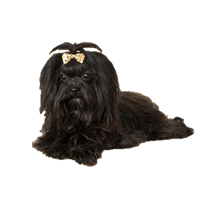
 RSS Feed
RSS Feed